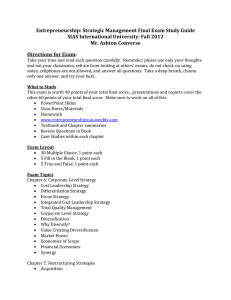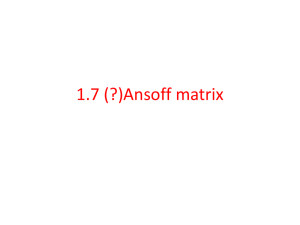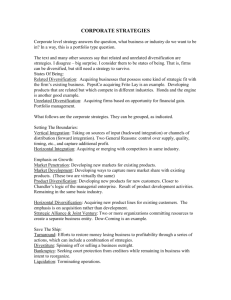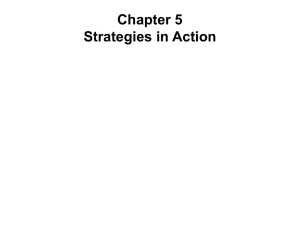CAPITAL BUDGETING - Investment Analysis & Portfolio Theory
advertisement
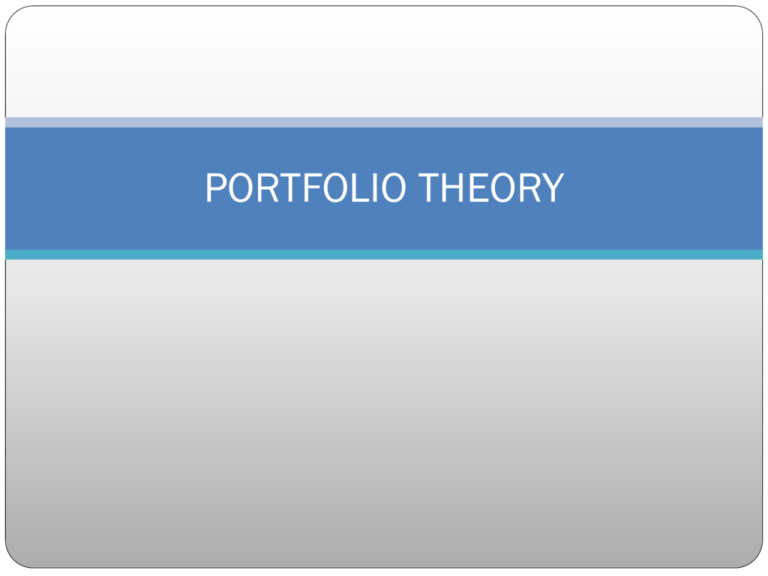
PORTFOLIO THEORY Risk & Return Return over Holding Period Return over multiple periods Arithmetic Mean Geometric Mean Dollar Averaging or IRR Return of investments has some uncertainty Scenario Analysis Risk & Return & Normal Distribution Random Variable Mean Standard Deviation Correlation Normal Distribution Risk Premium and Risk Aversion Risk Free Rate Risk Aversion Risk Premium Speculation vs Gambling Price of Risk Market Price of Risk Sharpe Ratio (Reward-to-Volatility) Ratio Inflation and Real Rate of Return Nominal Interest Rate (growth rate of economy) Real Interest Rate (growth rate of purchasing power) Real Rate ≈ Nominal Rate – Inflation r≈R–i (1+r)(1+i) = (1+R) r = (R – i)/(1+i) R = r + E(i) Capital Allocation Line Consider only two assets: Risk Free and Risky Let rf be risk free rate Let S be a be a risky asset with expected return of rs and risk of σs Capital should be allocated along Capital Allocation Line depending on the risk tolerance of investor Assuming assets are fairly priced, the portfolio will be a combination of risk and riskless. ETF has made the above easy Diversification Two types of risk: Market Risk, Systemic Risk, Nondiversifiable Risk that impact the whole economy Unique risk, Firm Specific Risk, Diversifiable Risk that is specific to the asset Diversification helps reduce specific risk Diversification Diversification using two assets Diversification using many assets Single-Index Stock Market Regression Y = a + bX R=α+βM+e e is uncorrelated with M hence Var(R) = β2 Var(M) + Var(e) β > 1 Cyclical β <1 Defensive
